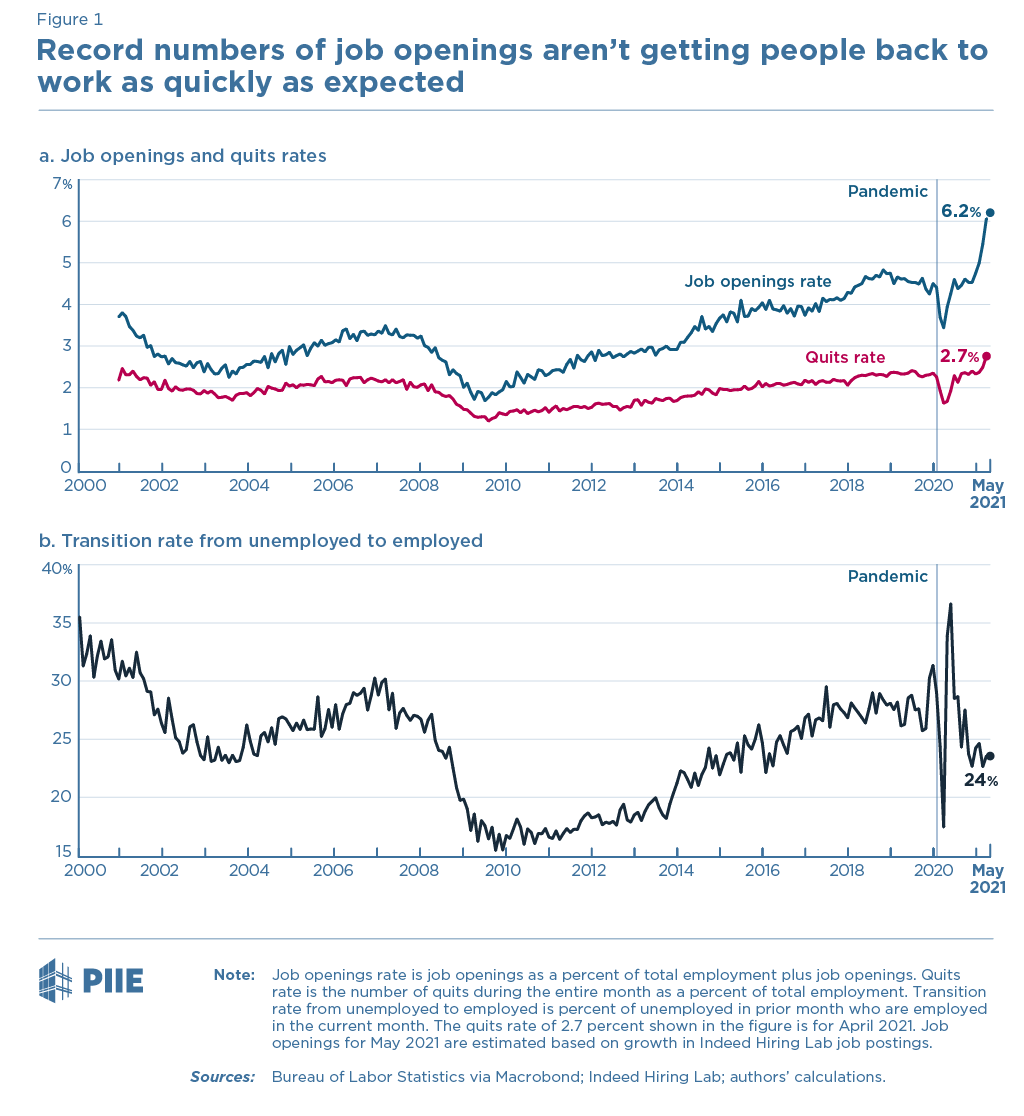Great Discontent: It’s time to evolve your US talent attraction
Workers are quitting in droves and they’re done with the current system. But you still need them. What can you do as an employer to bridge the chasm of discontent?

Let’s start by looking at how we got here in the first place. We’re in a strange age right now.
We’ve seen a volatile transition from one presidential administration to another. We’ve seen the increased awareness of issues in the form of Black Lives Matter, Stop Asian Hate, and other socially dynamic movements. We’re still navigating a terrifying virus.
And what’s happening among all this is that we’re experiencing an upheaval of the way we operate as a society – both at home and in the workplace.
What’s also happening – and something you’re likely noticing as an employer – is unprecedentedly high levels in job quit rates in the United States, coupled with equally striking levels in job openings. This graph from the Peterson Institute for International Economics (PIIE) speaks volumes:
People in the United States aren’t merely changing jobs. They’re bowing out of the traditional workforce altogether. It signals a discontent unseen in our history.
“The Great Resignation” is no longer a prediction; it’s a current reality, and it’s evolved to a Great Discontent. It’s becoming more challenging to motivate people to stay in their jobs, and harder to attract candidates to new roles. Data from the Workable network confirms this as well.
We see this, and we want to help you – the employer – overcome this challenge. After all, you need your people.
So we surveyed 750 people in the US – some employed, some self-employed, some unemployed, all more or less employable – to understand the most important factors influencing their career priorities. And now, we have results.
We identified four major themes in the dataset:
Money still talks
Despite all the new workplace developments, salary, perks and benefits are still top of mind. People want – and need – more of it when working.
Flexy is sexy
Flexible work arrangements are important to many workers – and much more for women than men – but it’s not as high of a priority for their employers.
The power of connectivity
No matter the kind of work involved, people are at the heart of it all. When people feel connected to their colleagues and leadership, they’ll stay and they’ll thrive.
There’s no place like home
Integrating personal and professional lives is very important for people – it’s the top reason why those not working aren’t working and the top benefit of flexible work.
Major takeaways include the following:
- Want to attract people? Increase the salary, and build up the perks and benefits. 63.4% say it’s the reason why they’re looking for other opportunities, and 62.2% say salary, perks and benefits represent the top factor influencing their decision whether to accept a new job.
- Build strong teams with people who work well together. Relationships with colleagues is the number-one most attractive factor about a potential new employer (37.1%), and a major area for improvement at their current employer (31.3%).
- Make it worthwhile for your workers to stay. Seven out of 10 (70.7%) respondents say they are either actively or passively looking for work, and 54% started looking just in the last half year.
- Pay attention to your younger workers. More than two out of five (42.8%) of those aged 21-29 say they’re actively looking for a new job, compared with just one quarter (24.7%) of those aged 50-59.
- Establish remote work and especially flexible schedules as a permanent policy. Both are highly valued by workers, with 58.2% saying flexible schedules are important to them – particularly because it’s easier to integrate personal and professional lives.
- Keep an eye on the potential disconnect between you and your employees in the importance of flexible work. Nearly half think their employer will ultimately return to in-office (44.7%) and set schedules (46.8%).
- Support your employees’ home lives as well as their work lives – especially if they’re women. Females are more than twice as likely as males to cite family priorities as the reason why they’re not working (39.4% vs. 19.3%).
Read more: check out our in-depth analysis of what matters most to workers in the United States in a job. Or stay tuned for the next excerpt from our Great Discontent survey report for the US.
Interested in seeing what’s going on at the other side of the pond? Check out our UK version of the Great Discontent report in its entirety.





